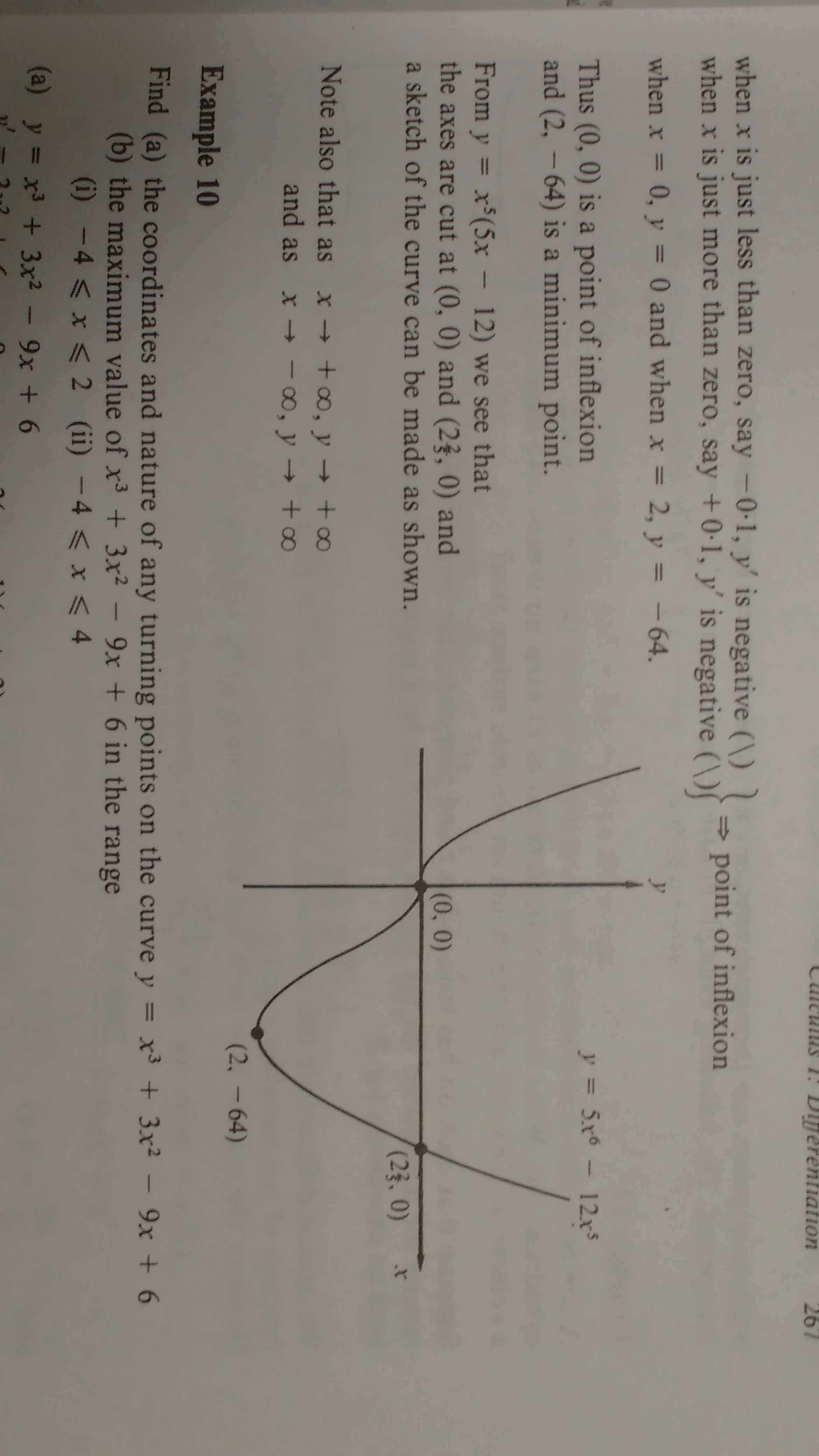Does the sign change either side of a point of inflection?
This is really confusing me. I have seen websites where it says the sign does change, but my text book says, it's a point of inflection if the sign dosen't change. I have included a copy of the page in the text book. Maybe I'm misunderstanding the book, but I don't think so.

This is really confusing me. I have seen websites where it says the sign does change, but my text book says, it's a point of inflection if the sign dosen't change. I have included a copy of the page in the text book. Maybe I'm misunderstanding the book, but I don't think so.

1 Answer
Please see below.
Explanation:
The question is incomplete.
"Does the sign change" leaves out the sign of what?
At an inflection point the sign of
The sign of
The sign of
In the example your book is using the fact that
Looking at the graph, we can see that the sign of
Checking the second derivative,
Additional Information
The sign of
In some definitions of inflection points
in others it is (because
Check your textbook's definition of inflection point.

